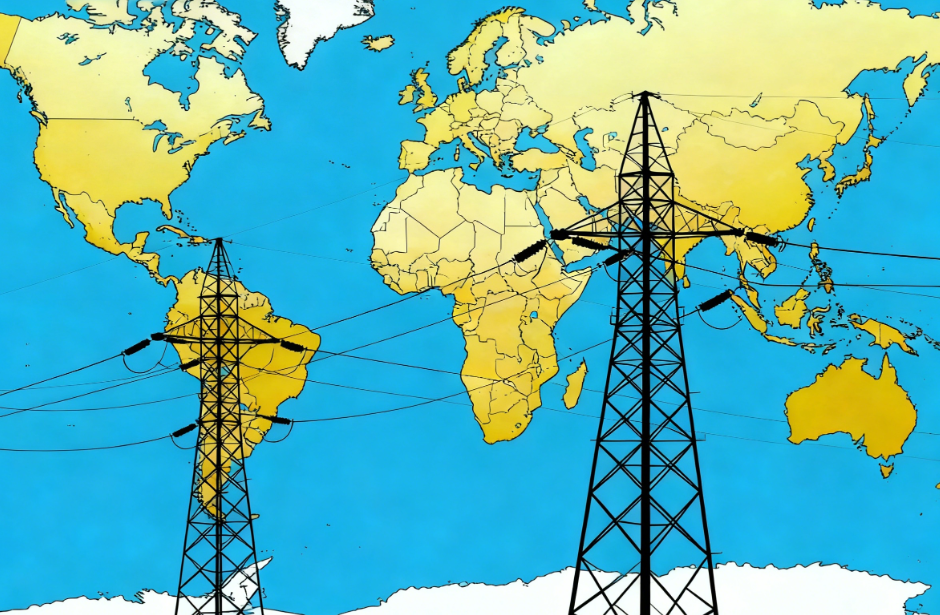Introduction: Why Power Standards Matter Globally

Electricity powers every aspect of modern life—but did you know that the world doesn’t share a single electrical standard?
Voltage and frequency systems differ by region, shaped by each country’s industrial history and infrastructure.
Uderstanding these standards is essential for anyone designing, exporting, or maintaining electrical equipment.
To simplify the global picture, today’s power grids can generally be divided into four main systems:
European Standard (50 Hz / 230 V)
American Standard (60 Hz / 120 V)
Japanese Standard (50 or 60 Hz / 100 V)
American High-Voltage System (60 Hz / 220 V)
Let’s explore each one and see how global electrical networks are structured.
01. European Standard System (50 Hz / 230 V)
Origin and Characteristics
The European 50 Hz / 230 V system originated in the late 19th century, when companies like Germany’s AEG standardized 50 Hz AC for efficient long-distance transmission.
This became the foundation for most of Europe, Africa, and parts of Asia and Oceania.
Typical Voltage Configuration
Single Phase: 230 V
Three Phase: 400 V
Frequency: 50 Hz
Countries Using the European System
This system dominates over 100 countries, including:
Europe: Germany, France, UK, Italy, Spain, Netherlands, Greece, Sweden, Poland, Austria, Switzerland, and more.
Middle East & Africa: Saudi Arabia (in part), UAE, Qatar, Egypt, South Africa, Morocco, and Jordan.
Asia-Pacific: India, Vietnam, Indonesia, Thailand, Australia, and New Zealand.
Others: Chile, Uruguay, Hong Kong, Singapore, Oman, and Cyprus.
The uniformity of 230 V/50 Hz allows easy equipment interchangeability within these regions.
02. American Standard System (60 Hz / 120 V)
Origin and Characteristics
The American 60 Hz / 120 V system traces back to the United States’ industrial revolution.
Westinghouse Electric popularized 60 Hz AC in the 1880s, replacing Edison’s original 110 V DC standard.
The relatively lower 120 V voltage was chosen to reduce shock risk in domestic environments.
Typical Voltage Configuration
Single Phase: 120 V
Three Phase: 120/208 V or 277/480 V
Frequency: 60 Hz
Countries Using the American Standard
North America: United States, Canada
Central America: Panama, Costa Rica, Guatemala, Honduras, Nicaragua, El Salvador
South America: Colombia, Venezuela, Ecuador, Belize
Caribbean: Dominican Republic, Haiti
The 120 V standard remains the safest and most widely used configuration in North America, especially for household use.
03. Japanese Standard System (50 Hz or 60 Hz / 100 V)
Origin and Dual-Frequency Split
Japan is unique—it operates two grid frequencies within the same country.
Eastern Japan (Tokyo region): 50 Hz, influenced by German systems
Western Japan (Osaka region): 60 Hz, influenced by American systems
Typical Voltage Configuration
Single Phase: 100 V
Three Phase: 200 V
The 100 V system was chosen for safety and compatibility with early-generation electrical appliances.
Modern Challenges
This dual-frequency setup sometimes complicates nationwide power transmission and cross-regional equipment use.
However, Japan maintains world-class reliability through precision engineering and strict grid management.
04. American High-Voltage System (60 Hz / 220 V)
Origin and Spread
This system evolved from the U.S. 60 Hz standard but uses higher voltage levels (127 V or 220 V) to improve transmission efficiency while remaining compatible with American-style electrical frameworks.
Typical Voltage Configuration
Single Phase: 127 V or 220 V
Three Phase: 220/380 V
Frequency: 60 Hz
Countries Using the American High-Voltage System
South America: Brazil, Peru
Asia: Philippines, South Korea, Taiwan
Middle East: Saudi Arabia
Central America: Mexico, Cuba
This hybrid system combines the safety of 60 Hz with the efficiency of higher voltages, making it ideal for modern industrial development.
Why These Standards Matter for Electrical Protection
With global variation in voltage and frequency, electronic protection components must be designed for compatibility and reliability.
ONCCY, a leading manufacturer of surge protection devices (SPDs), miniature circuit breakers (MCBs), and molded case circuit breakers (MCCBs), provides solutions tailored to meet global standards.
Whether your system runs on 120 V/60 Hz or 230 V/50 Hz, ONCCY products ensure safety, durability, and stable operation across all electrical environments.
Quick Reference Table (Summary)
| System Type | Voltage (Single Phase) | Frequency | Main Regions |
|---|---|---|---|
| European Standard | 230 V | 50 Hz | Europe, Africa, Asia-Pacific |
| American Standard | 120 V | 60 Hz | North & Central America |
| Japanese Standard | 100 V | 50 / 60 Hz | Japan |
| American High-Voltage | 127 / 220 V | 60 Hz | Latin America, Asia |
Frequently Asked Questions (FAQ)
1. Why do some countries use 50 Hz while others use 60 Hz?
The difference originated from early industrial choices—Europe adopted 50 Hz for efficiency, while America chose 60 Hz for smoother motor operation. Once infrastructure was established, the systems became too costly to unify.
2. Can I use a 230 V appliance in a 120 V country?
Not directly. You’ll need a step-up transformer or universal power converter. Always check both voltage and frequency compatibility.
3. Why is Japan’s grid split between 50 Hz and 60 Hz?
Japan imported early generators from Germany and the U.S., leading to two frequency systems that persist today.
4. How do surge protectors and circuit breakers handle global voltage differences?
High-quality SPDs and circuit breakers, like those made by ONCCY, are designed for specific voltage ranges and surge levels. They ensure safe operation even under varying grid conditions worldwide.
Conclusion: One World, Many Voltages — ONCCY Keeps It Safe
From Europe’s 230 V networks to America’s 120 V grids, the diversity of global electricity systems reflects history, innovation, and safety philosophy.
No matter where you operate, electrical protection is key to reliability.
That’s why ONCCY continues to develop certified SPDs, MCBs, and MCCBs that meet IEC, CE, TUV, and UL international standards, ensuring your systems are always protected.
